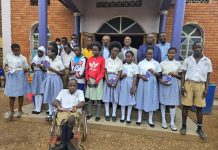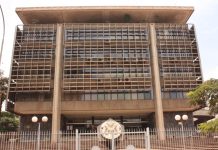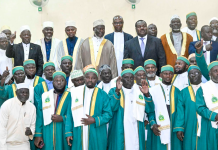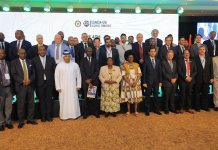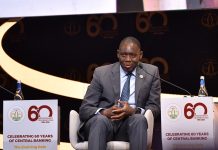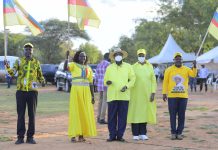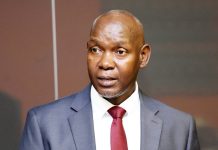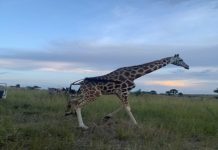By David Mwanje
The World Wide Fund for Nature (WWF) Uganda has launched its Strategic Plan for 2025–2030, aligning environmental conservation with Uganda’s economic agenda under the upcoming National Development Plan IV (NDP IV). The launch, held at the Protea Hotel Kampala, brought together government officials, development partners, and community leaders.
WWF Uganda Country Director Ivan Tumuhimbise said the plan builds on the organization’s global expertise but responds directly to Uganda’s biodiversity and climate priorities. He noted that the new strategy supports NDP IV’s goal of sustainable transformation, showing that environmental protection and economic growth can complement each other.
The plan targets the protection of 300,000 hectares of forests, stabilization of endangered species, and a reduction of 1.1 million metric tons of carbon emissions. It also supports the Parish Development Model and Uganda’s green industrialization agenda by improving water systems and promoting climate-resilient communities. Expected outcomes include stable water supply for irrigation, reliable hydropower generation at Karuma and Isimba dams, and stronger tourism performance, which currently contributes about 7.7% of GDP.
Implementation will rely on existing government structures. District Environment Officers will oversee forest protection, while the National Environment Management Authority (NEMA) will incorporate emission targets into its annual reporting. Community-based resource committees across 68 districts will track wildlife and biodiversity indicators.
The European Union has committed €15 million to finance green energy mini-grids in Kibaale and Hoima, part of a broader collaboration between the public and private sectors.
President Yoweri Museveni, in his recent State of the Nation Address, emphasized that conservation underpins agro-industrialization. He noted that wetland protection ensures steady rainfall for coffee and maize farmers. The First Deputy Prime Minister, Rebecca Kadaga, added that WWF’s plan strengthens rural women’s participation in environmental management and smallholder agriculture.
During World Wetlands Day at Lutembe Bay last year, Water and Environment Minister Sam Cheptoris said wetland restoration supports WWF’s freshwater objectives. “Our US$300 million investment in wetland restoration will secure fisheries like those in Lake Victoria, supporting over one million livelihoods. WWF partnerships are vital to this success,” he said.
EU Ambassador Jan Sadek said the plan advances both Uganda’s and Europe’s green growth goals and supports Uganda’s transition to middle-income status.
Experts project a 78% success rate for the plan, citing three main factors: its integration into the Ministry of Finance’s 2026–2027 budget framework, WWF’s strong performance in the previous phase—restoring 120,000 hectares of forest, surpassing targets—and confirmed financial backing from the EU, Norway, and USAID, totaling US$42 million.
WWF anticipates challenges such as illegal logging and the charcoal trade, but plans to deploy 200 trained community scouts using digital patrol tools. The organization also intends to promote beekeeping, eco-tourism, and other sustainable livelihoods to ease pressure on forests. In the Albertine Graben, district-level committees will help mediate land conflicts between oil operations and conservation activities.
The plan is expected to create around 50,000 green jobs in reforestation and tourism by 2030, reduce flood damage to crops by 15%, and sustain hydropower production amid changing weather patterns.
Ambassador Sadek said WWF’s plan “offers both environmental and economic rewards.” With strong government backing and WWF’s experience, Uganda is positioned to advance sustainable growth that protects natural resources while improving lives.



